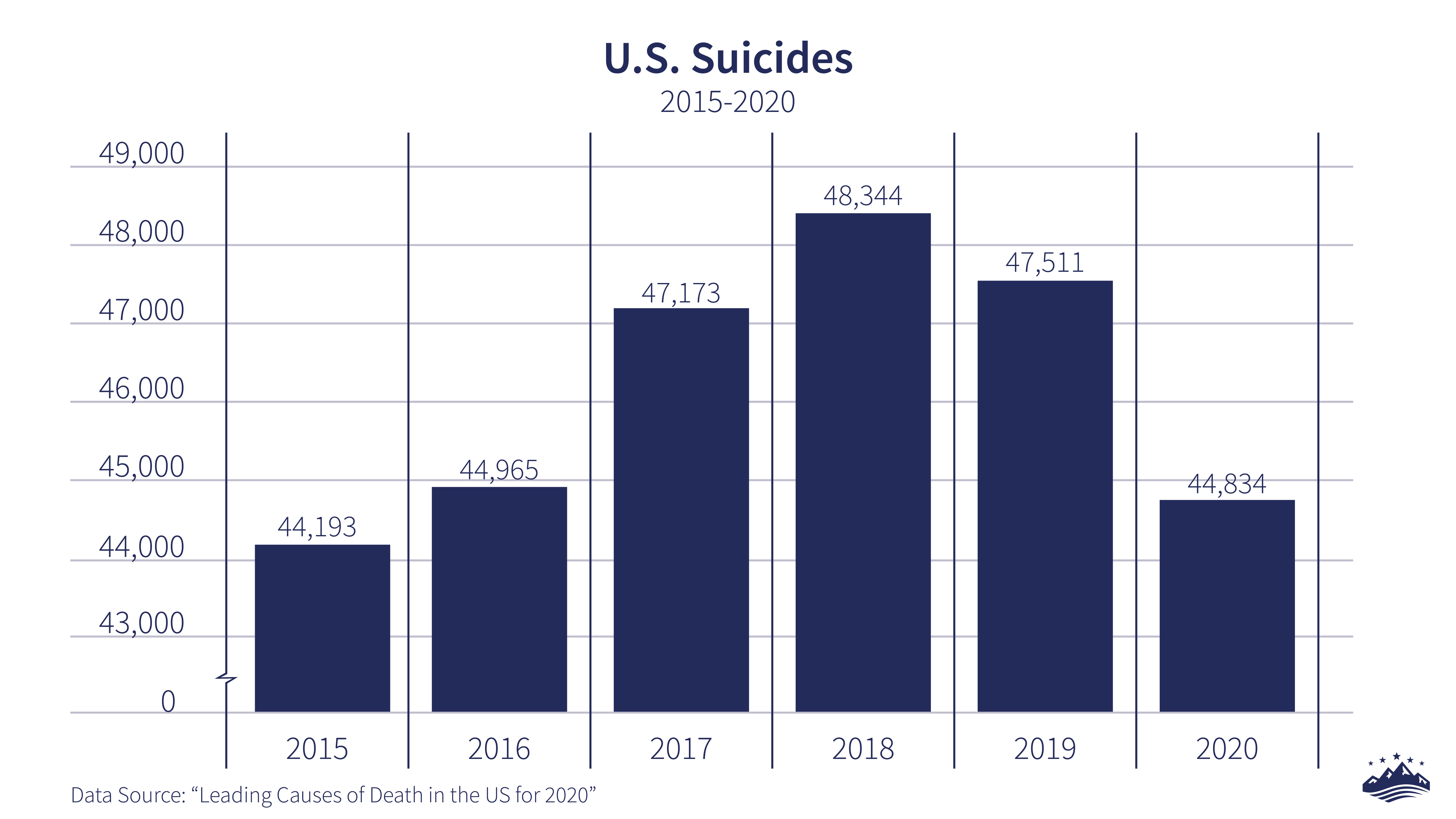
Written by Derek Monson
April 13, 2021
Mental health professionals recently described mental health problems as a “second pandemic” during the period of COVID-19, and rightly so. Mental health problems were considered a crisis before the pandemic arrived, with Utah having one of the highest rates of suicide in the nation. These mental health challenges led to a raft of legislation in Utah to address the “tsunami of mental health needs.”
But new data illustrates an unexpected outcome given the pandemic-driven mental health issues: Suicides have decreased at the national level during the pandemic. Together, the evidence suggests a mental health landscape picture more nuanced than we might have expected during the pandemic. Examining those nuances could aid our understanding of how to best address mental health problems.
Between June 2019 and January 2021, the proportion of U.S. adults reporting symptoms of anxiety or depressive disorder increased from 11% to 41%, according to one report. The same report notes that difficulty sleeping or eating, greater use of alcohol or drugs, and worsening of chronic health conditions from COVID-induced worry and stress are other negative mental health outcomes during the pandemic.
It would be easy to conclude based on this evidence that suicide has probably spiked during the pandemic as well. But the opposite is true.
New data on leading causes of death in America shows that the number of suicides decreased by 5.6% from 2019 to 2020, after falling more slowly from a peak in 2018. Incidentally, this data also lists COVID-19 as the third leading cause of death in 2020, behind heart disease and cancer.
What does it mean that indicators of mental health problems have increased during the pandemic, while the number of suicides has decreased? It likely means a more complicated picture of mental health during the pandemic than many recognize.
There are many indicators suggesting that mental health during the pandemic has worsened in various ways. It should be noted that the pandemic continues into 2021, so perhaps suicides will spike from 2020 to 2021 in ways that might overwhelm the decrease in suicides between 2019 and 2020. It could also be that a bigger factor is at work in the data (e.g., perhaps many of the people who would have committed suicide in 2020 died by other means – such as COVID-19 – so the drop in suicides from 2019 to 2020 wouldn’t say much about mental health).
On the other hand, the significant drop in suicide numbers might suggest that the pandemic has created circumstances that help prevent suicide for some people with mental health problems. For instance, maybe being in lockdown together deepened family connections and relationships in ways that did not eliminate all mental health problems, but did prevent some suicides – effectively breaking the connection between mental health problems and suicide for some Americans. Alternatively, given that suicides were already on the decline between 2018 and 2019, perhaps the causes of that decline were simply more powerful going into the pandemic than the negative mental health impacts caused by the pandemic in its initial stages.
More evidence, time and research will be required before any firm conclusions can be drawn from the unexpected decline in suicides in America. Hopefully, the causes of that decline will be something worth celebrating. Given the added stresses and mental health problems during the pandemic, having something to celebrate would be a wonderful thing.
More Insights
Read More
How transparent are school districts about curriculum?
Utah districts don’t need to wait for legislation to be transparent – many have sought to be transparent on their own. District leaders interested in this reform can do several things right away.
What you need to know about the upcoming state party conventions
The two major political parties are about to hold their state conventions. Here’s what you need to know.
Here’s why the First Amendment’s religion clauses are not in conflict
Some suggest there is a tension between protection for the free exercise of religion and the prohibition on the establishment of religion. But a better take is to see the two clauses as congruent.



